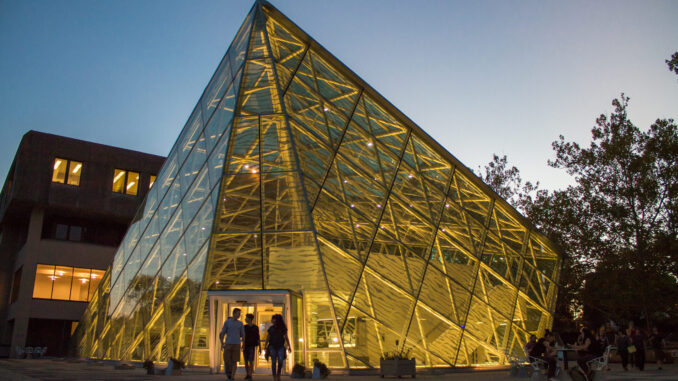
SUNY New Paltz is facing a tuition revenue loss of over $1 million, caused by lower enrollment numbers for this semester compared to last fall.
This semester, enrollment is about 5% below what it was a year ago.
President Donald P. Christian said this is “an outcome that is far more positive than some had speculated and feared,” in his Oct. 6 President’s Report to the Academic and Professional Faculty. However, the revenue loss does pose some issues for the college.
“The plan is to reduce expenditures as much as possible to make up for the shortfall without negatively impacting the student experience,” said Michele Halstead, vice president for Administration and Finance.
Dean of Admissions Lisa Jones said they are certain the lack of enrollment is due to the COVID-19 pandemic.
“We were doing very well with applications, accepts and deposits from first-year prospects and that began to fall off as the reality of the seriousness of the pandemic hit New York State,” Jones said. “Some of the shortfall is related to new out-of-state and international students who have chosen to stay at home for the semester. Some first-year students also asked to defer enrollment until the spring ’21 semester.”
Christian noted that withdrawal rates from online courses this semester were much higher than withdrawal rates from in-person courses, indicating that the learning style the pandemic is causing may leave lasting effects on students and the institution.
“That aligns closely with the sense we are gaining that many students are feeling overwhelmed by the work of distance-education courses,” Christian said. “We must bear in mind that the experiences of our students this fall and spring will have important bearing on retention into the following year and beyond — with longer-term implications for enrollment and tuition revenue.”
Due to this tuition revenue loss, the college is accepting first-year students in the spring for the first time in years.
First-year students are usually only enrolled in the fall because the college did not have the necessary support systems in place for the spring, but virtual programming has created the opportunity for these support systems to be available.
Jones said it is too soon to know how many students will be enrolled next semester, but they anticipate a “small cohort.”
Next semester is expected to look very similar to this semester, with a mix of in-person and virtual or hybrid courses.
“Such a mix will meet the educational goals of those students for whom safety concerns or finances make studying remotely a better option, as well as those who seek and are best served by an on-campus experience that includes live instruction — all while reducing human density on campus and promoting health and safety,” said Christian in the report.
With enrolling first-year students next semester and catering to the needs of in-person and virtual students, the college hopes to see an increase in enrollment and tuition revenue that can help the campus further down the road.

